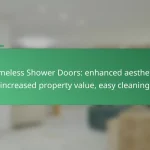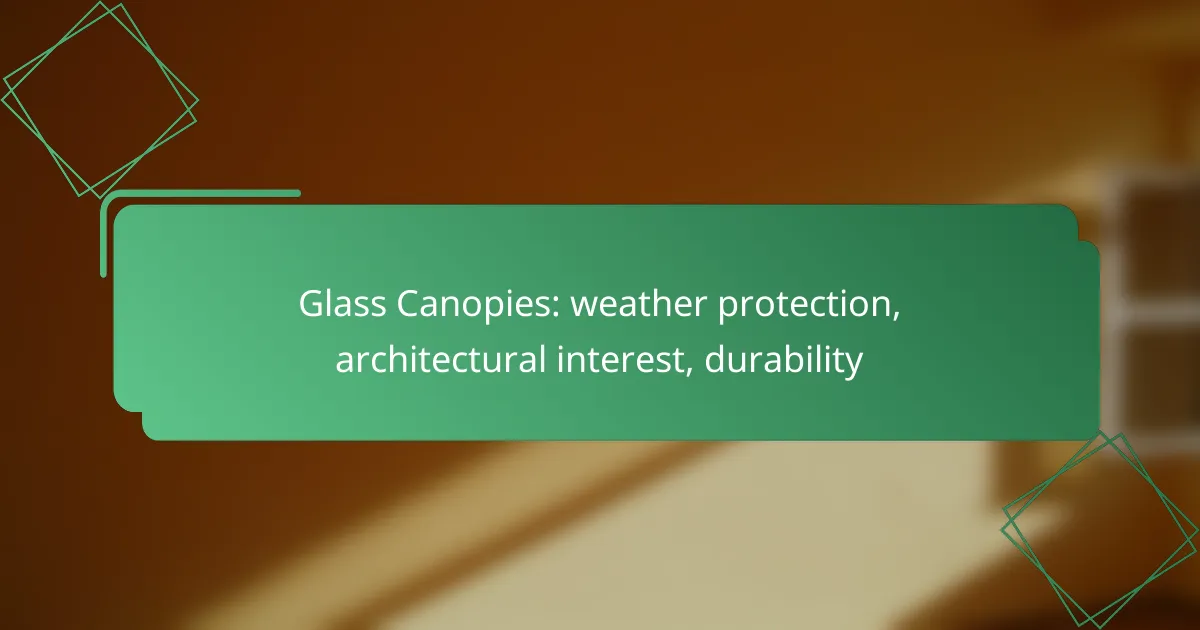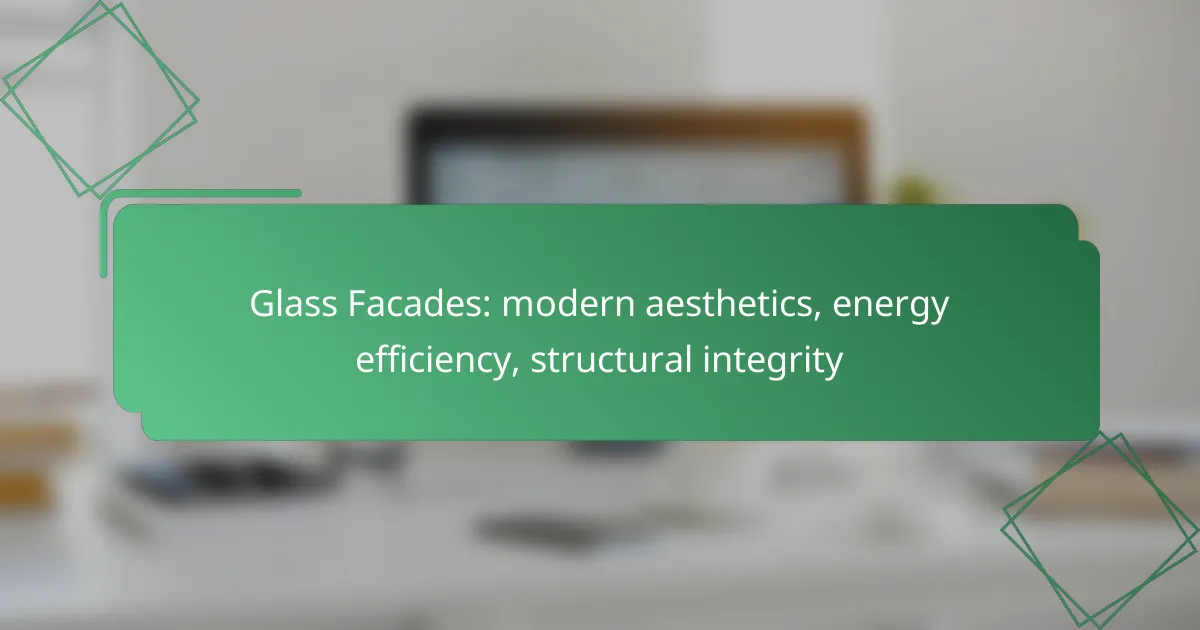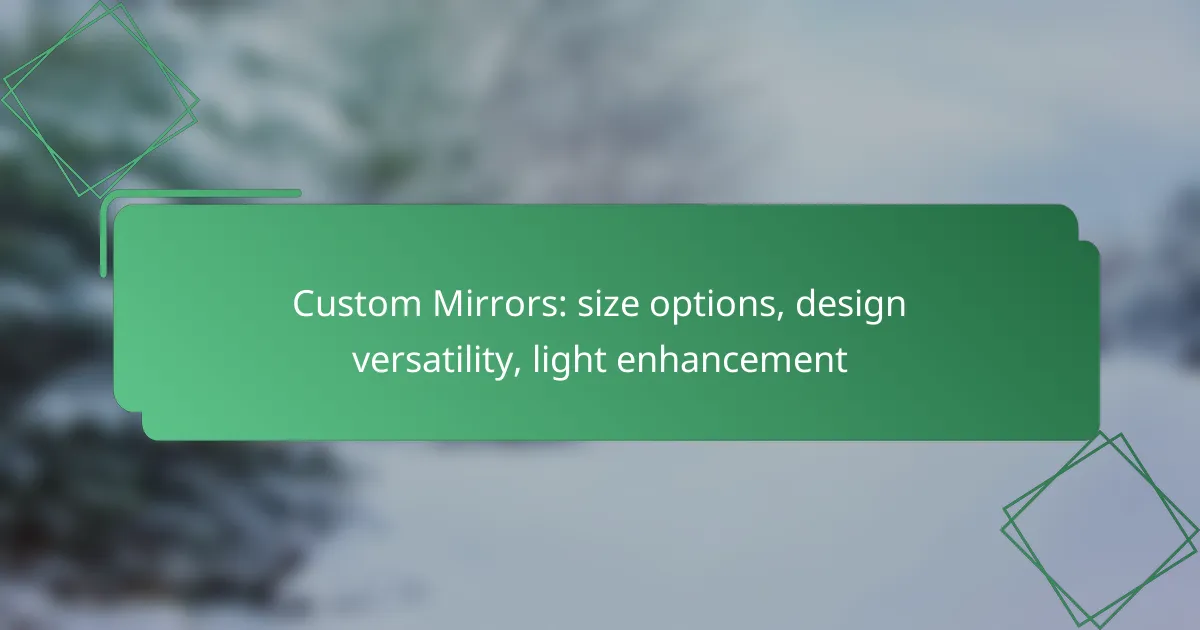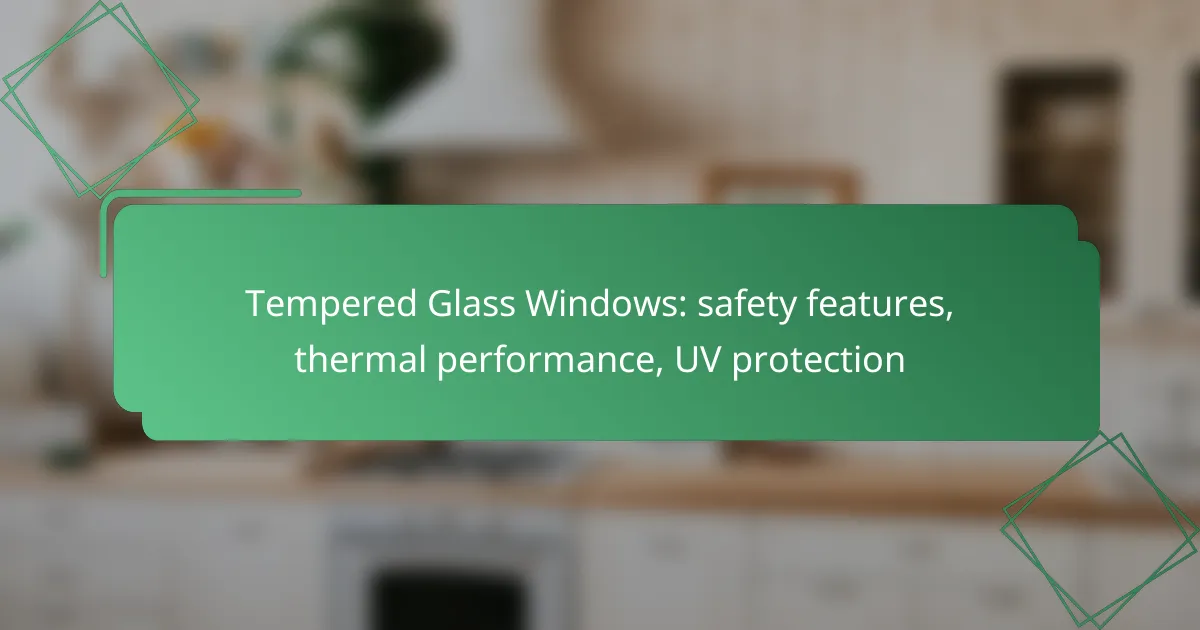Glass canopies serve as an elegant solution for weather protection, combining functionality with architectural interest. They effectively shield spaces from rain, snow, and UV rays while allowing natural light to flood in, making them ideal for both residential and commercial settings. With options like tempered and low-emissivity glass, these canopies not only enhance durability but also contribute to energy efficiency and aesthetic appeal.
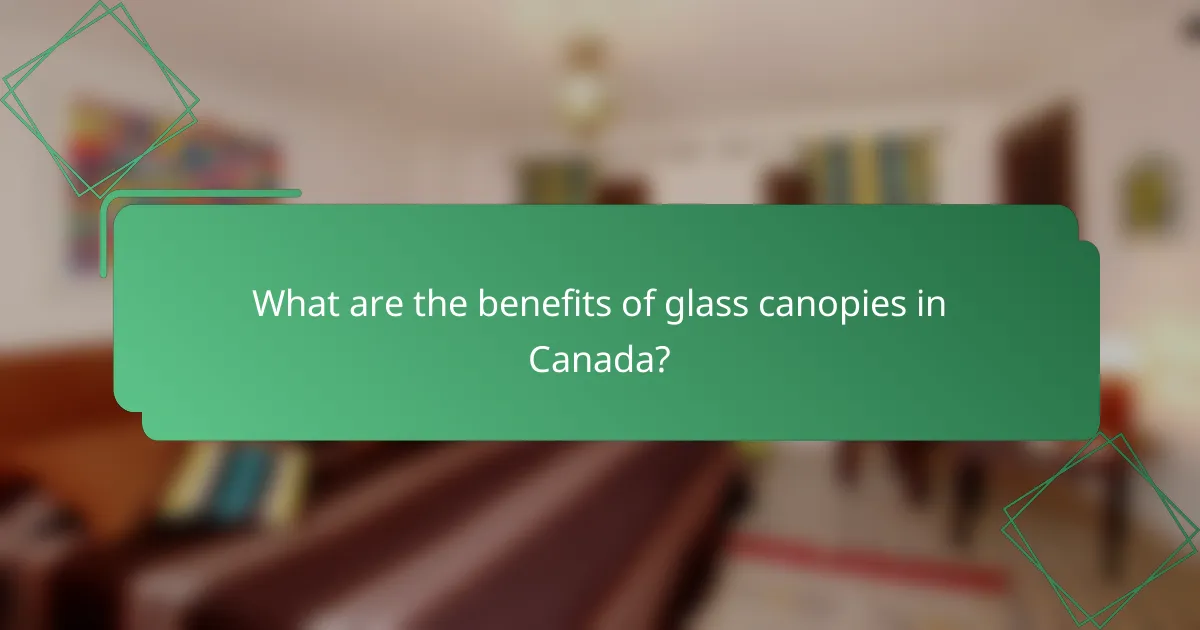
What are the benefits of glass canopies in Canada?
Glass canopies in Canada provide significant advantages, including protection from harsh weather conditions, enhanced architectural appeal, and increased natural light. They are particularly beneficial in regions with heavy snowfall and rain, making them a practical choice for residential and commercial buildings.
Weather protection from rain and snow
Glass canopies effectively shield entrances and outdoor spaces from rain and snow, ensuring that people can enter and exit buildings comfortably. In Canada, where winter weather can be severe, these structures help prevent water accumulation and ice formation, reducing slip hazards.
When selecting a glass canopy, consider the local climate and the amount of snowfall in your area. A well-designed canopy can withstand heavy snow loads and prevent water from pooling, which is crucial for safety and longevity.
Enhanced architectural aesthetics
Glass canopies add a modern touch to any building, enhancing its overall architectural aesthetics. They can be customized in various shapes and sizes, allowing for creative designs that complement the existing structure.
In urban areas, glass canopies can create a sleek, contemporary look, while in residential settings, they can blend seamlessly with traditional designs. Choosing the right frame materials, such as aluminum or steel, can further enhance the visual appeal.
Increased natural light
One of the primary benefits of glass canopies is their ability to allow natural light to filter into covered areas. This not only brightens entryways but also creates a more inviting atmosphere for occupants and visitors.
Incorporating a glass canopy can reduce the need for artificial lighting during the day, leading to energy savings. Consider using low-emissivity (low-E) glass to minimize heat loss while maximizing light transmission, which is particularly beneficial in Canadian winters.
Durability and low maintenance
Glass canopies are known for their durability, especially when constructed with tempered or laminated glass. These materials are designed to withstand harsh weather conditions, including high winds and heavy snowfall, making them a reliable choice for Canadian climates.
Maintenance is generally minimal, requiring only periodic cleaning to maintain clarity and appearance. Regular inspections can help identify any potential issues, such as sealant wear, ensuring the canopy remains functional and visually appealing over time.
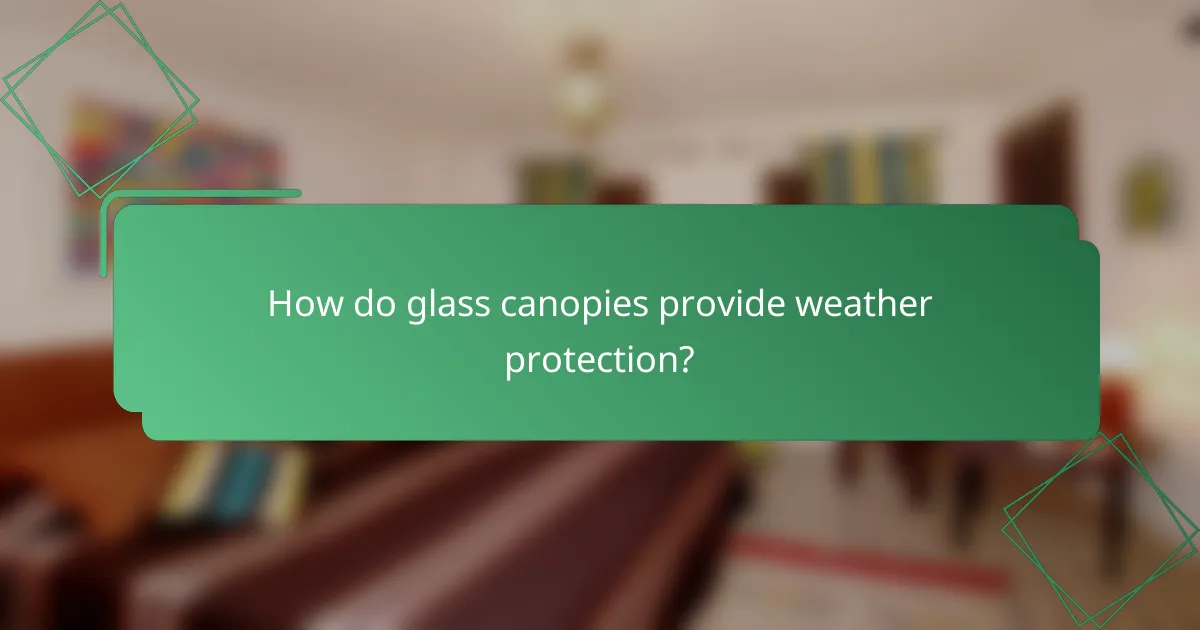
How do glass canopies provide weather protection?
Glass canopies offer effective weather protection by creating a barrier against rain, snow, and UV rays. They enhance outdoor spaces while maintaining visibility and aesthetic appeal, making them a popular choice for residential and commercial buildings.
Shield against rain and snow accumulation
Glass canopies are designed to deflect rain and snow, preventing accumulation on walkways and entrances. This feature reduces the risk of slips and falls, enhancing safety for pedestrians. Properly sloped canopies facilitate water drainage, ensuring that rainwater flows off rather than pooling.
When selecting a glass canopy, consider the local climate. In regions with heavy snowfall, opt for thicker tempered glass to withstand the weight. Regular maintenance, such as cleaning and inspecting for cracks, is essential to ensure long-term performance.
UV protection for outdoor spaces
Glass canopies provide significant UV protection, shielding outdoor areas from harmful sun exposure. This feature is particularly beneficial for patios, gardens, and commercial spaces where people gather. By blocking a substantial portion of UV rays, glass canopies help preserve furniture and reduce fading.
For enhanced UV protection, consider using specialized glass coatings or tinted glass options. These can further minimize UV penetration while maintaining transparency. Regularly check the glass for any signs of wear or damage to ensure optimal UV shielding over time.

What types of glass are used in canopies?
Glass canopies typically use tempered glass and low-emissivity (Low-E) glass, each offering distinct advantages for safety, energy efficiency, and aesthetic appeal. Selecting the right type of glass is crucial for ensuring durability and functionality in various weather conditions.
Tempered glass for safety
Tempered glass is heat-treated to enhance its strength, making it significantly more resistant to impact and thermal stress compared to standard glass. This type of glass shatters into small, blunt pieces rather than sharp shards, reducing the risk of injury in case of breakage.
When choosing tempered glass for canopies, consider local building codes that may specify its use in public spaces or high-traffic areas. It is commonly available in thicknesses ranging from 6 to 12 mm, providing options for different structural requirements.
Low-E glass for energy efficiency
Low-E glass features a special coating that reflects infrared light while allowing visible light to pass through, enhancing energy efficiency. This type of glass helps maintain indoor temperatures by reducing heat loss in winter and minimizing heat gain in summer, making it ideal for climate-controlled spaces.
When selecting Low-E glass for canopies, look for products that meet energy performance standards relevant to your region. This glass can significantly lower heating and cooling costs, making it a smart investment for both residential and commercial buildings.
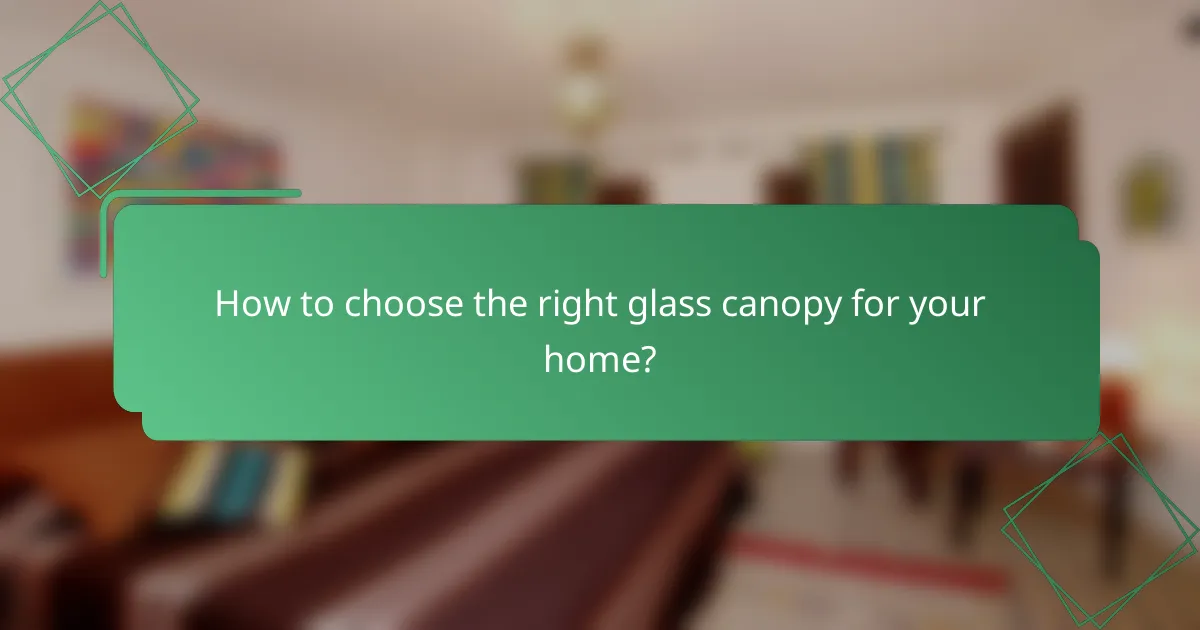
How to choose the right glass canopy for your home?
Choosing the right glass canopy involves considering factors like local climate, architectural design, and budget. A well-selected canopy not only provides weather protection but also enhances the aesthetic appeal of your home.
Consider local climate conditions
Your local climate plays a crucial role in selecting a glass canopy. For areas with heavy snowfall or strong winds, opt for thicker, tempered glass that can withstand these elements. In warmer climates, lighter glass may suffice, but ensure it offers UV protection to prevent fading of interior furnishings.
Additionally, consider the orientation of your home. A canopy facing south may require more sun-resistant features, while a north-facing canopy might prioritize thermal insulation.
Evaluate design compatibility with architecture
The glass canopy should complement your home’s architectural style. For modern homes, sleek, frameless designs work well, while traditional homes may benefit from more ornate frames. Ensure the canopy’s color and finish harmonize with existing structures.
Take into account the scale of the canopy relative to your home. A large canopy can overwhelm a small house, while a small canopy might look insignificant on a larger structure. Visualize the design using sketches or 3D models to assess compatibility.
Assess budget and installation costs
Budgeting for a glass canopy involves considering both material and installation costs. High-quality glass can range from moderate to high prices, depending on thickness and treatment. Installation costs can vary significantly based on complexity and local labor rates.
As a rough estimate, expect to spend anywhere from a few hundred to several thousand dollars, depending on size and design. Always obtain multiple quotes from contractors to ensure competitive pricing and clarify what is included in the estimate.
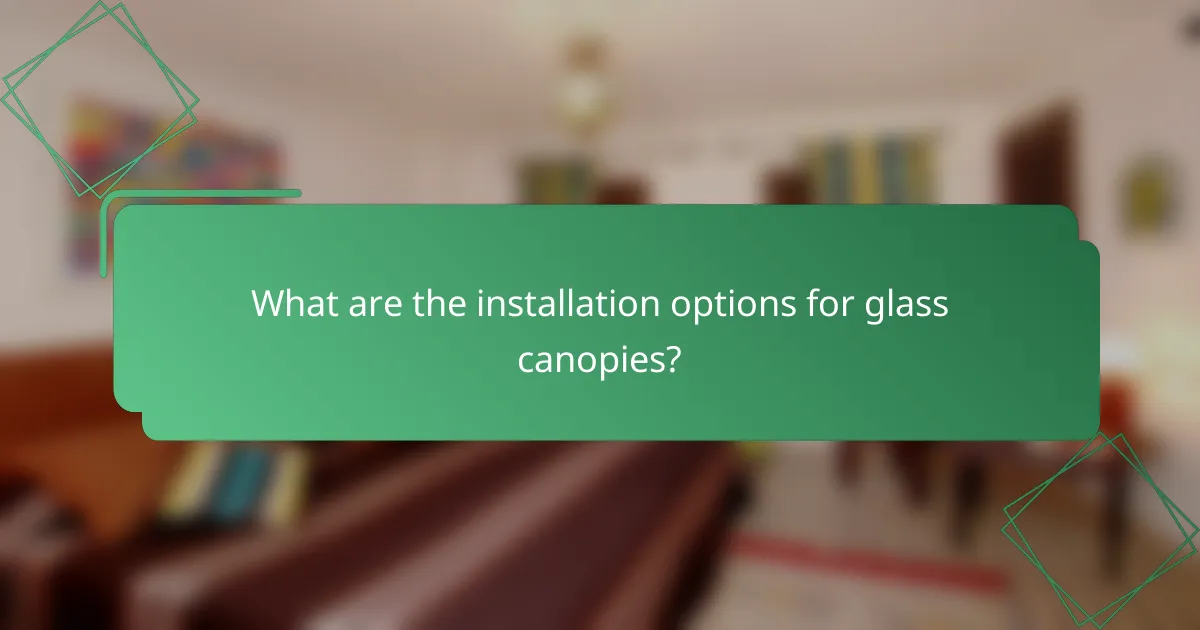
What are the installation options for glass canopies?
Glass canopies can be installed using professional services or through DIY kits, depending on your skill level and project requirements. Each option offers distinct advantages and considerations, making it essential to choose the one that best fits your needs.
Professional installation services
Hiring professional installation services for glass canopies ensures that the job is done correctly and safely. Professionals have the expertise to handle complex installations, ensuring compliance with local building codes and regulations.
Costs for professional installation can vary widely, typically ranging from several hundred to a few thousand dollars, depending on the size and complexity of the canopy. It’s advisable to obtain multiple quotes and check references before making a decision.
DIY installation kits
DIY installation kits for glass canopies are designed for homeowners who prefer a hands-on approach. These kits often include all necessary materials and detailed instructions, making it easier for those with basic construction skills to complete the project.
While DIY kits can save money, they require careful attention to detail and safety precautions. Ensure you have the right tools and consider the weight of the glass panels, as improper handling can lead to accidents. Always check local regulations to confirm that your installation meets safety standards.
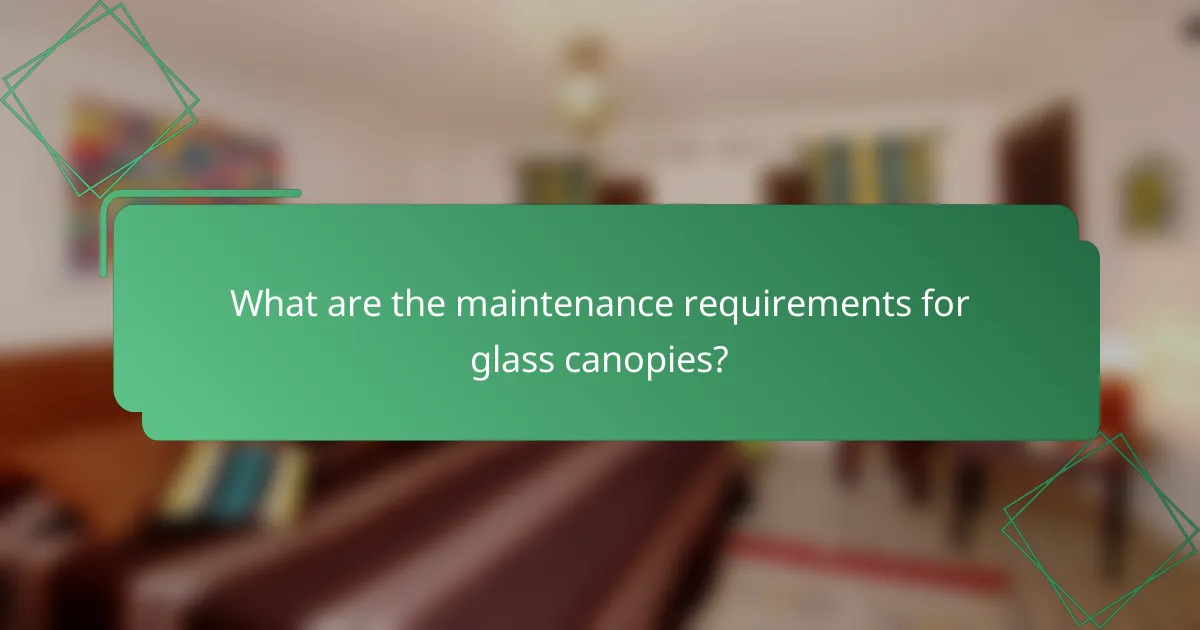
What are the maintenance requirements for glass canopies?
Glass canopies require regular maintenance to ensure their longevity and aesthetic appeal. Key tasks include cleaning for visibility and inspecting for any structural issues that may arise over time.
Regular cleaning for clarity
To maintain the clarity of glass canopies, regular cleaning is essential. Depending on environmental factors, such as dust and rainfall, cleaning should be performed every few months to prevent buildup that can obscure visibility.
Use a soft cloth or sponge with a mild detergent solution to avoid scratching the glass surface. Avoid abrasive cleaners and tools that could damage the glass. For hard-to-reach areas, consider hiring a professional cleaning service.
Inspection for structural integrity
Regular inspections are crucial to ensure the structural integrity of glass canopies. Check for any signs of cracks, chips, or loose fittings at least twice a year, especially after severe weather events.
Pay attention to the mounting hardware and seals, as these components can degrade over time. If any issues are detected, consult a professional to assess the situation and perform necessary repairs to prevent further damage.
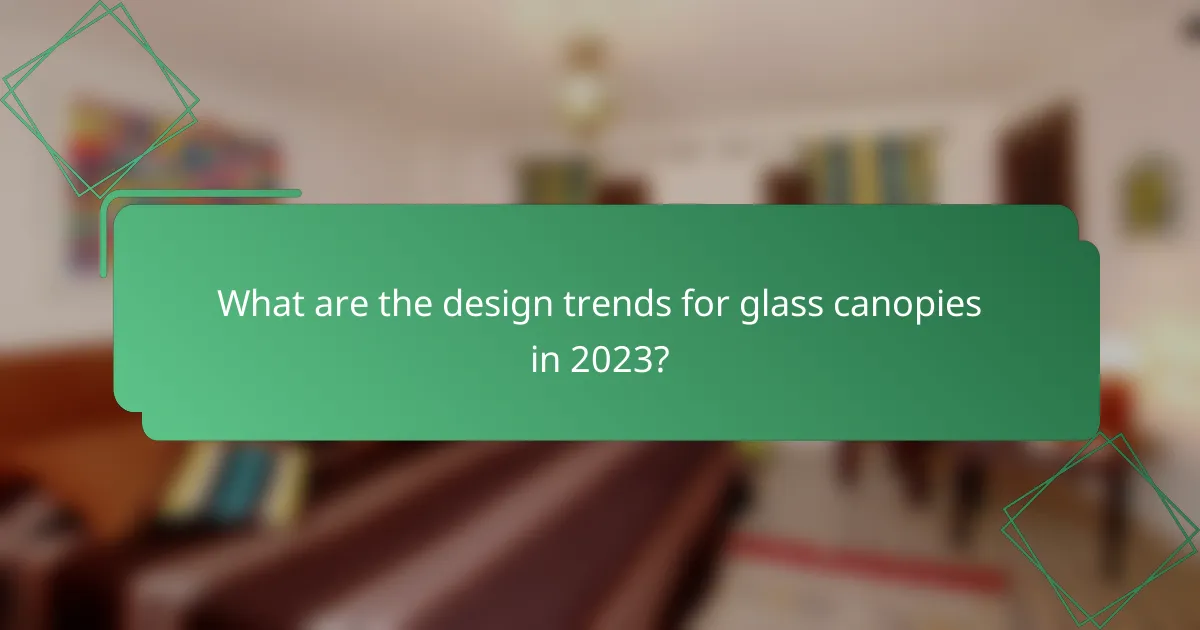
What are the design trends for glass canopies in 2023?
In 2023, glass canopies are trending towards sleek designs that prioritize both aesthetics and functionality. Key trends include the use of frameless glass, innovative shapes, and energy-efficient materials that enhance weather protection while adding architectural interest.
Frameless Glass Canopies
Frameless glass canopies are gaining popularity due to their minimalist appearance and seamless integration with modern architecture. These canopies provide unobstructed views and allow natural light to flood spaces beneath them, making them ideal for residential and commercial buildings alike.
When considering frameless options, ensure that the glass used is tempered or laminated for safety and durability. Installation typically requires specialized hardware to support the glass without traditional framing, which can increase initial costs but often pays off in aesthetic value.
Innovative Shapes and Designs
Architects are experimenting with various shapes for glass canopies, moving beyond standard rectangles to curves and asymmetrical designs. These innovative forms can enhance the visual appeal of a building and create unique outdoor spaces.
When selecting a shape, consider how it complements the overall architecture of the building. Custom designs may require collaboration with architects and engineers, which can impact timelines and budgets, so plan accordingly.
Energy-Efficient Materials
Energy efficiency is a significant trend in glass canopy design, with many opting for insulated or low-emissivity (low-E) glass. These materials help regulate temperature and reduce energy costs by minimizing heat transfer.
Incorporating energy-efficient glass can qualify buildings for green certifications, which may enhance property value. Be mindful of local regulations regarding energy efficiency standards, as they can vary significantly by region.




